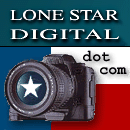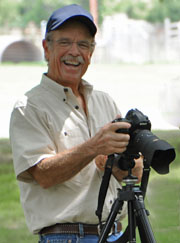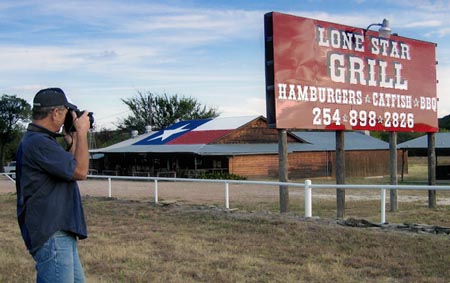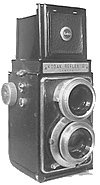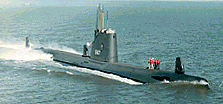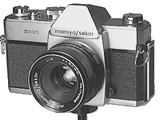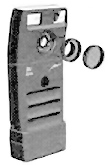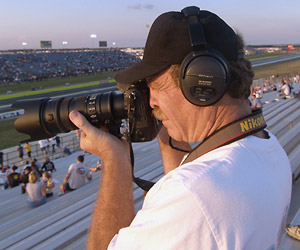|
|
|
About
Lonestardigital.com Lonestardigital.com
is located in the Dallas - Fort Worth
area of Texas and has been operated by
John Cowley as a digital photography
information site since its initial
launch in January 1998. Lonestardigital.com
is linked as a review, reference, and
information source from hundreds of
digital photography web sites
throughout the world.
Lonestardigital.com has also been
featured & referenced in several
digital photography publications,
including Spring into Digital
Photography, PCWorld, Kodak
Professional's ProView magazine,
Digital Camera magazine, and
eDigital Photo.com magazine.
John is a former member of the
National
Press Photographers
Association. The story
behind Lonestardigital's name &
graphics Everywhere
you go in Texas, you'll see Texas flags
and the phrase Lone Star.
Restaurants, parks, schools,
businesses, clubs, sporting events,
special edition cars & pickup
trucks, and many, many more businesses
& products (even
beer)
are named Lone Star. The
State Flag of Texas, called
the "Lone Star Flag",
was adopted in 1845 when Texas
became the 28th state of the
Union. The
official Texas State Motto is "The
Lone Star State". Texans love
their State Flag & Motto.
Lone
Star and the Texas flag are symbols
of the heart & soul of
Texas. In the
Beginning Photography
first caught my interest when I was
about twelve years old. I started out
with a Kodak Reflex 620 camera.
I began with black & white film,
and took the time to learn about the
basics of photography. And I
liked it.
Fascinated
with the idea of "doing it myself", I
saved up enough to buy some basic
darkroom supplies and a contact
printer. Next came an enlarger. And
soon I had my own darkroom cordoned off
in a section of the house, where I
spent endless hours experimenting with
my new hobby. What a treat it
was to go through boxes of old family negatives
and be able to crop, enlarge, enhance, and
develop my own prints. (That was
great!) The Submarine
Years Years later, I
served as a crew member aboard the fast-attack
submarine USS
Gudgeon.
A camera enthusiast already, I jumped at the
opportunity to be trained at the U.S. Navy
Periscope Photography School at Pearl
Harbor, Hawaii as the backup photographer for
the boat. Equipment used: Nikon &
Hasselblad. In
addition to periscope photography, the
school provided hands-on training in
color film processing, advanced camera
technology, and aerial
photography. And my
interest in photography surged to a new
level. Pumped up with
knowledge and enthusiasm, I bought a new
Mamiya-Sekor 500 DTL single lens reflex 35mm
camera during a port-of-call visit to Kobe,
Japan. The 500
DTL was one of the first cameras with
onboard TTL (spot or area) metering
shown in the viewfinder as an exposure
guide. It was an all manual camera,
with on-the-fly exposure set by
adjusting the aperture dial on the
lens. The kit I bought included a 50mm
f/2 Auto Mamiya-Sekor screw mount
lens. And then came
digital In late 1992 I
saw an ad for the new "FotoMan" digicam by
Logitech advertised in a computer supply
catalog. The ad caught my attention
seriously ... "FotoMan!
Capture, review, edit, and print
pictures using your
computer!" What? A
camera I could use with my computer??
It was just a black & white camera,
but the mere concept was absolutely
breathtaking. Just imagine, I was
thinking ... I could do take &
process pictures on my own computer...
and even print them out on my own
printer!! I
couldn't resist - and the new camera
arrived by FedEx a couple of days
later. I struggled with
the new technology... But eventually, I got the
hang of it. And soon I really was
processing & printing my very own digital
pictures right at home! The picture quality
wasn't very good, but it served me for the time
being. (And it was certainly fun.) The first color
digicam came out about a year later, but the
pictures were still pretty poor compared to
pictures from "real" cameras. So I stuck with
what I had for a couple of more
years. 1996 - The
breakthrough year The Kodak
DC-50 color digital camera was introduced in
1996. After
an on site demonstration by the local
Kodak field representative, I bought
one immediately. Now this was a
real improvement in digital
camera technology! The DC-50
became a valuable tool at work,
completely replacing my Polaroid camera
for production documentation
. My ties to film
were broken. From that
point on, I've been strictly digital ... and
never looked back. Since the DC-50,
I've worked my way through quite a few digital
cameras. Some kept me happy for a while, others
were in & out of my camera bag in just a few
days. (Listed in alphabetical order) What am
I using now? A Sony
RX100 III, a Nikon D2HS, a Nikon D700
and a Canon HF-G21
Camcorder. The
Sony RX100 III is my everyday
walk-around camera. Truly pocketable,
with picture quality that rivals the
best Nikon DSLRs ... absolutely
amazing!. The
Nikon D2HS is my preferred DSLR. Love
the picture quality and practical file
sizes. I use
my Nikon D700 as a backup when a second
professional class DSLR is
needed. A Canon
HF-G21 Camcorder is my primary video
camera. Amazing automatic built-in
stabilizing and a 20x optical zoom.
I also
use the Sony RX100 III as a pocket-size
alternate video camera.
|
